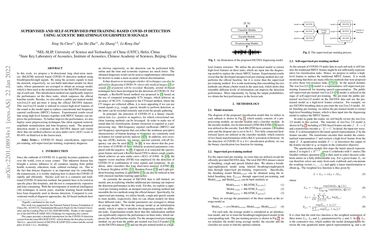Supervised and Self-supervised Pretraining Based COVID-19 Detection Using Acoustic Breathing/Cough/Speech Signals
In this work, we propose a bi-directional long short-term memory (BiLSTM) network based COVID-19 detection method using breath/speech/cough signals. By using the acoustic signals to train the network, respectively, we can build individual models for three tasks, whose parameters are averaged to obtain an average model, which is then used as the initialization for the BiLSTM model training of each task. This initialization method can significantly improve the performance on the three tasks, which surpasses the official baseline results. Besides, we also utilize a public pre-trained model wav2vec2.0 and pre-train it using the official DiCOVA datasets. This wav2vec2.0 model is utilized to extract high-level features of the sound as the model input to replace conventional mel-frequency cepstral coefficients (MFCC) features. Experimental results reveal that using high-level features together with MFCC features can improve the performance. To further improve the performance, we also deploy some preprocessing techniques like silent segment removal, amplitude normalization and time-frequency mask. The proposed detection model is evaluated on the DiCOVA dataset and results show that our method achieves an area under curve (AUC) score of 88.44% on blind test in the fusion track.
PDF Abstract